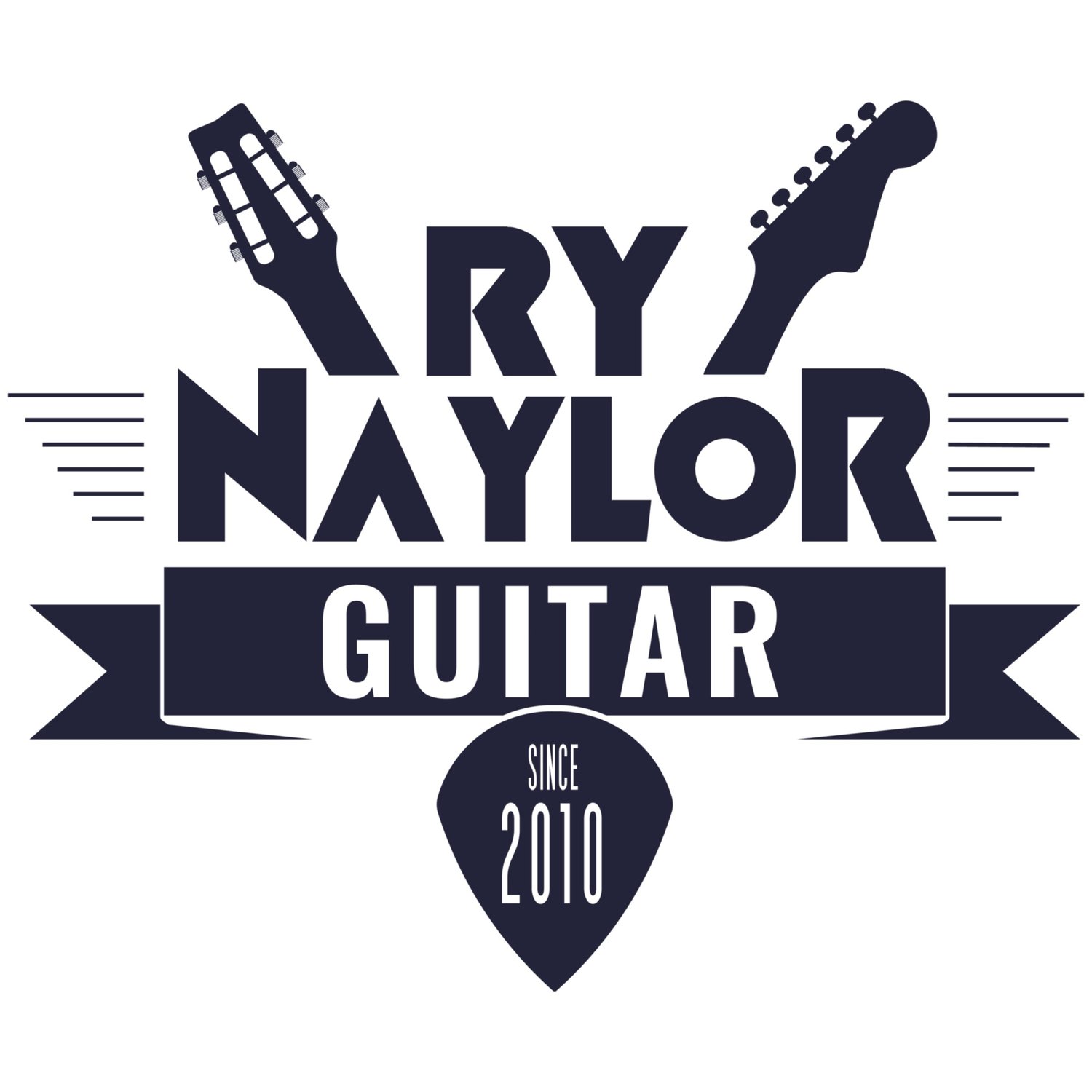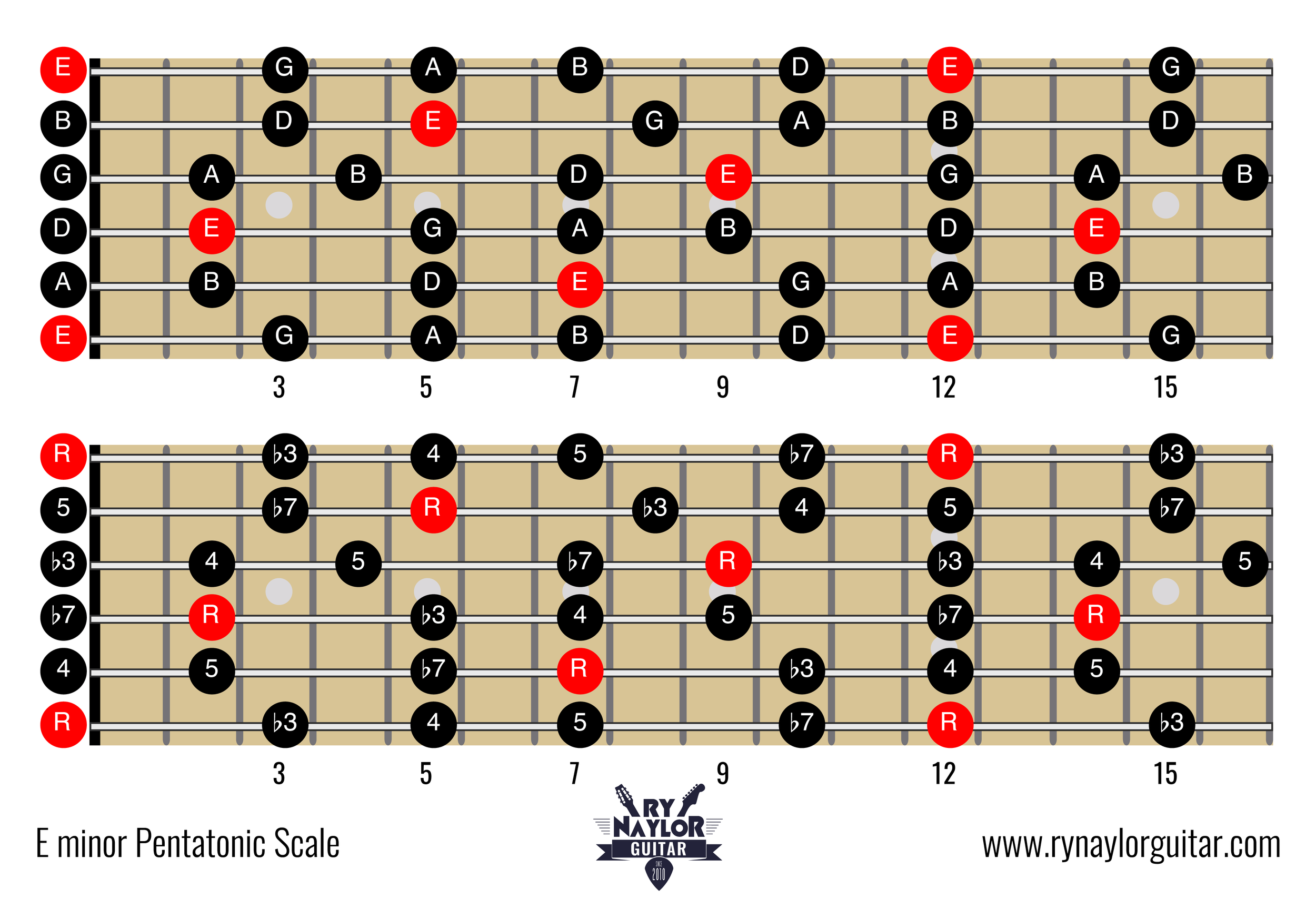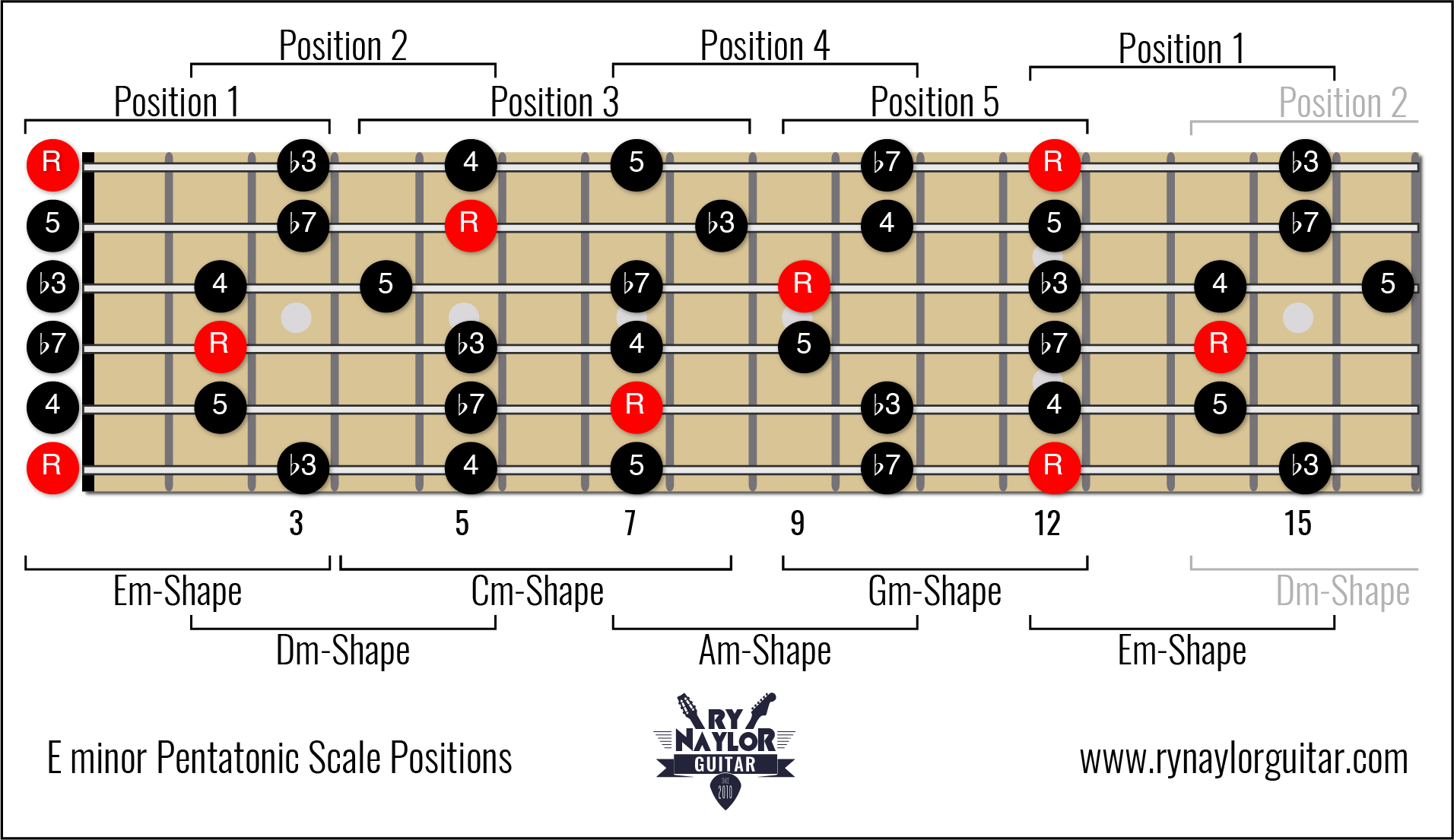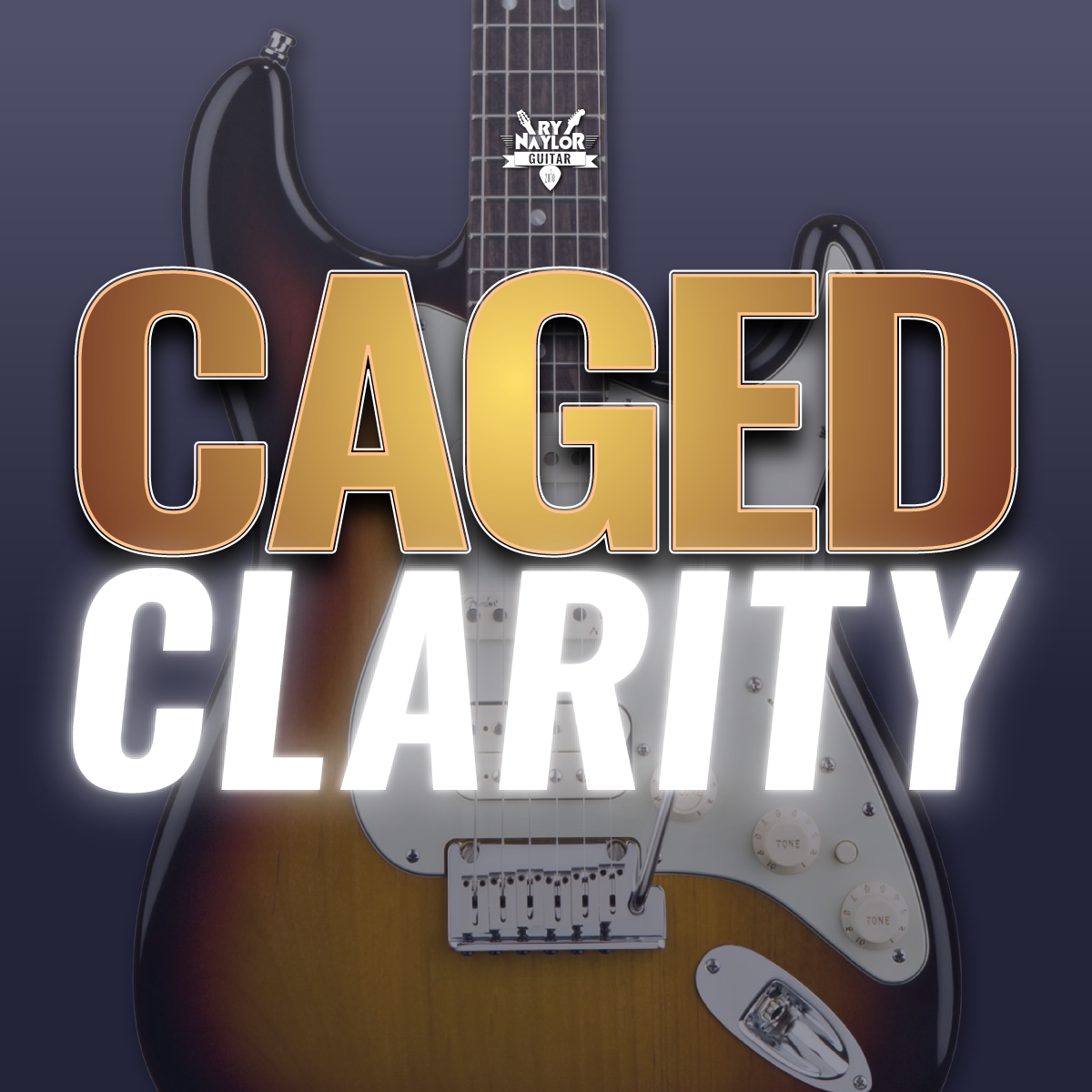The Minor Pentatonic Scale Positions on Guitar
/The minor pentatonic scale tends to be the first scale you ever learn on guitar, even before the major scale, and for good reason. It’s a great scale to quickly get into soloing and improvising, especially in styles like rock or blues.
Not only are they useful for your lead playing, pentatonic scales are perhaps the most commonly used scale when it comes to riff-based rhythm playing.
Basically…you need to know them!
The popular approach to learning the scale on the guitar fretboard is through five different two note per string minor pentatonic scale positions.
In this lesson, we’ll be exploring these five different minor pentatonic guitar scale patterns, as seen in my video lesson below:
What does pentatonic mean?
The prefix ‘penta-’ refers to five (think pentagram, pentagon).
A pentatonic scale is therefore a scale containing five notes within one octave.
‘Penta - tonic’ scale translates to a ‘Five - note’ scale
What is the minor pentatonic scale on guitar?
We always begin with a Root (R), the note which names the scale and upon which we add the other notes. For this lesson, our Root note will be E.
As we are dealing with a minor pentatonic scale it will contain the three notes of a minor chord, namely a Root, the minor third (b3), and the perfect fifth (5).
A minor third above E is the note G and it will always be found 3 frets (minor third) above the E Root note.
The perfect fifth is the fifth note of the E major scale, which will be B.
To the R-b3-5 we add an additional two notes, the perfect fourth and minor seventh.
The perfect fourth (4) is the 4th note of the E major scale, the note A.
The minor seventh (b7), the note D will always be a whole step below the Root.
The notes of the E minor pentatonic scale are therefore E-G-A-B-D.
Here’s how the scale is laid out on a single string:
THE MINOR PENTATONIC SCALE HORIZONTALLY ON ONE STRING
If we lay out all instances of these notes across the entire fretboard, we can start to see how the five positions are formed:
Beyond the 12th fret the sequence of notes will repeat in a higher octave. The 5 positions will therefore all be found between the open strings and the 12th fret.
What are the 5 minor pentatonic scales?
The five positions of the minor pentatonic are created when starting the scale pattern from each of the five notes it contains. For example:
Position 1 of the minor pentatonic scale begins with the Root note on string 6(E).
Position 2 begins with the second note of the scale on string 6(E) (the b3).
Position 3 begins with the third note of the scale on string 6(E) (the 4) etc…
Position 1 of the minor pentatonic scale
Position 1 begins from the Root note, the open string 6(E). Notice how all of the open strings form the lower notes of the scale pattern (i.e. those nearest the headstock):
E minor pentatonic position 1
Each scale position will be transcribed in the TAB from the Root note. I’ve added my recommended fingerings for each example.
You’ll play from the lowest Root up to the highest note in the scale position, then descend the scale to the lowest note on string 6(E), before returning to the starting Root note.
This way, your ear is more attuned to the Root. This can also be helped by playing the scale over an Em chord or a constant E note.
Octave Minor Pentatonic Positions
Position 1 will be repeated at the octave of the open strings at the 12th fret.
Indeed, each of the five minor pentatonic positions can be repeated one octave higher by adding 12 frets:
E MInor pentatonic position 1 (octave position)
Your end goal is to be confident with naming all the intervals in each scale position.
At the very least, you should be confident with the location of the Root notes.
Position 1 of the minor pentatonic scale is formed around the triangular formation of the 6-4, 4-2, and 6-1 Root octave shapes:
octave shapes found in position 1
I prefer to identify this scale pattern as the Em-shape under the CAGED system.
The reason is that the minor pentatonic scale pattern can be formed around a moveable barre chord form that resembles the open Em chord:
E MINOR ‘SHAPE’ MINOR PENTATONIC
Position 2 of the minor pentatonic scale
Position 2 of the minor pentatonic scale will begin on the second note of the scale, the interval of the minor third (b3), the note G:
E minor pentatonic position 2
Position 2 is formed around the 4-2 Root octave shape:
THE 4-2 octave shape found in position 2
Under the CAGED system, I would identify this as the Dm-shape minor pentatonic as it can be formed around a moveable barre chord resembling the open Dm chord (it’s as if there is a capo on the 2nd fret):
D minor ‘shape ‘ minor pentatonic
Remember that the minor pentatonic positions will link together like jigsaw pieces. The upper notes of position 1 (the notes nearest the guitar body) will therefore form the lower notes of position 2:
The upper notes of position 1 are the lower notes of position 2
Position 3 of the minor pentatonic scale
Position 3 of the minor pentatonic scale will begin from the third note of the scale, the interval of the perfect fourth (4), the note A:
E minor pentatonic position 3
Position 3 is formed around the backward-facing 5-2 Root octave shape:
THE 5-2 octave shape found in position 3
Under the CAGED system, I would identify this as the Cm-shape minor pentatonic as it can be formed around a moveable barre chord resembling the open Cm chord (which can technically exist!):
C minor ‘shape ‘ minor pentatonic
Position 4 of the minor pentatonic scale
Position 4 of the minor pentatonic scale will begin on the fourth note of the scale, the interval of the perfect fifth (5), the note B:
E minor pentatonic position 4
Position 4 is formed around the 5-3 Root octave shape:
THE 5-3 octave shape found in position 4
Under the CAGED system, I would identify this as the Am-shape minor pentatonic as it can be formed around a moveable barre chord resembling the open Am chord:
A minor ‘shape ‘ minor pentatonic
Position 5 of the minor pentatonic scale
Position 5 of the minor pentatonic scale will begin on the fifth note of the scale, the interval of the minor seventh (b7), the note D:
E minor pentatonic position 4
Position 5 is formed around the triangular formation of the 6-3, 3-1, and 6-1 Root octave shapes:
octave shapes found in position 5
Under the CAGED system, I would identify this as the Gm-shape minor pentatonic as it can be formed around a moveable barre chord resembling the open Gm chord (which can exist):
G minor ‘shape ‘ minor pentatonic
After position 5, you return back to position 1 one octave above the open strings.
Here are all 5 positions of the E minor pentatonic scale with both their ‘number’ and ‘CAGED’ names:
E minor pentatonic scale across the guitar fretboard (the sequence will repeat above the 12th fret octave)
The minor pentatonic scale link
The scale positions will always link up in the same order, but only the Root notes of E, F, and F# will begin with position 1 nearest to the headstock
As the Root note changes, the starting minor pentatonic scale position (nearest the headstock) will also change.
For example, the A minor pentatonic will begin in the open position with position 4:
The D minor pentatonic will begin in the open position with position 2:
Remember, not all Root notes will be able to use the open strings.
FOR MORE
As a member of my Patreon group, you’ll get access to my Minor Pentatonic PDF Study Charts in support of this lesson.
In it, I detail the minor pentatonic patterns from every Root note. The perfect guide to really nail the pentatonic scale across the entire fretboard
In joining the group you’ll be helping to support more regular lessons just like this and get exclusive access to a vast library of lessons and resources from my content across YouTube and Instagram.
Find out more at patreon.com/rynaylorguitar
If you would like to study with me, you can do so via Zoom or as an enrolled student in one of my video courses. Recommended for this lesson is my course dedicated to the CAGED system, Guitar Blueprint.













































